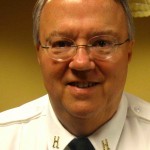
More than 41 years ago, while working a full-time job and serving as the EMS Captain of my local fire department, I began a 15-month training program to become a paramedic. Actually, in New York, there were no medics when I embarked on the training, we would become EMT-Critical Care Technicians. Classes were held on Tuesday and Thursday evenings from 6:30 to 11 p.m., plus eight hours per week of clinical training at area hospitals in every specialty conceivable. There was LOTS of reading, hours of study, dozens of tests, and many sessions of hands-on practice.
About half-way through the class, we received word from the NYS Health Department that we could become paramedics – as the state had just adopted the federal guidelines for paramedic training. The hitch: we (basically) had to start all over again. Well, after much discussion, the class decided to go for it, although it meant adding another six months to our program.
Fortunately, we were able to zoom through much of the introductory material in the brand-new paramedic curriculum written by Dr. Nancy Caroline, one of America’s leading authorities on emergency medicine. We didn’t have books – they weren’t published yet. We had “galley proofs” of Dr. Caroline’s new text, Emergency Care in the Streets. Forty-one years later, I still have my original copy of those mimeographed pages!
The course was a true roller coaster ride. Most of the classes were taught by area, board-certified physicians in just about every specialty. Of course, the longest portion of the course dealt with cardiac emergencies, taught by a well-respected cardiologist and cardio-thoracic surgeon. Our hours in the hospitals were filled with practice, observation, hands-on experience and hard work. ER experience at Erie County’s hospital – a facility that took all comers – was a real eye-opener. I remember seeing just about everything from hypochondriac hang-nail complainers to a shotgun blast victim who had most of his face blown off. We learned to start IVs, push meds, take histories, perform intra-cardiac injections, do CPR, defibrillate, and so much more. By the time the class was over, ending with both a NYS certifying examination and skills testing, we had put in more than 1,000 hours – not including the homework, study, papers, reading and worry. That was 40 years ago this spring.
Well, 40 years later I’m hanging it up. While I retired from The Villages Public Safety Department as the EMS Captain a few years ago, I maintained my paramedic certification, and, even though not “on the job,” I’ve used the training several times in many different situations. I’ve done lots of CPR, and for a couple of years I was the neighborhood “doctor.” People would call with medical questions, and a few would ask that I come to take a blood pressure or assess an ongoing medical situation. In one case, the neighbor was having the “big one” – a major heart attack – and he just wanted me to “check him out.” Well, needless to say, I called 911, had my former crew come to the house, we did a 12-lead EKG and determined that he needed to be in the hospital NOW.
But now it’s about to be over. My paramedic license expires in a couple of months, and I’ve decided not to renew. I will let the license lapse. My 40 years as a medic in New York and Florida are over. I look back and feel a great deal of pride in what I accomplished. Here, in The Villages, the AED program is a real plus, and I was a big part of its growth. I taught CPR to thousands of people over the years, and I know I’ve saved a few lives.
While my license may go away, my interest in pre-hospital medicine never will. I still get the pertinent journals and look to keep up with the newest trends in the field – not that I’ll use them, but because it’s great to see the advances we’ve taken in 40 years. When I started practicing, we used a Mennen-Greatbatch cardiac monitor. It only weighed 40 pounds and did a simple, 3-lead EKG. Wilson Greatbatch, an electronics wizard – who lived in a nearby town – donated the monitor. Today, most area departments are using Medtronic monitors that do everything except cook eggs! The devices do three- and 12-lead EKGs, they monitor pulse oxygenation, take blood pressures, are capable of transmitting the EKG to the hospital from the home, and so much more. Almost every medication I used 40 years ago has been replaced by something that is more effective and faster acting.
It may be over, but the memories will last a lifetime!
Gail Lazenby is a Villager and a former member of The Villages Public Safety Department.

